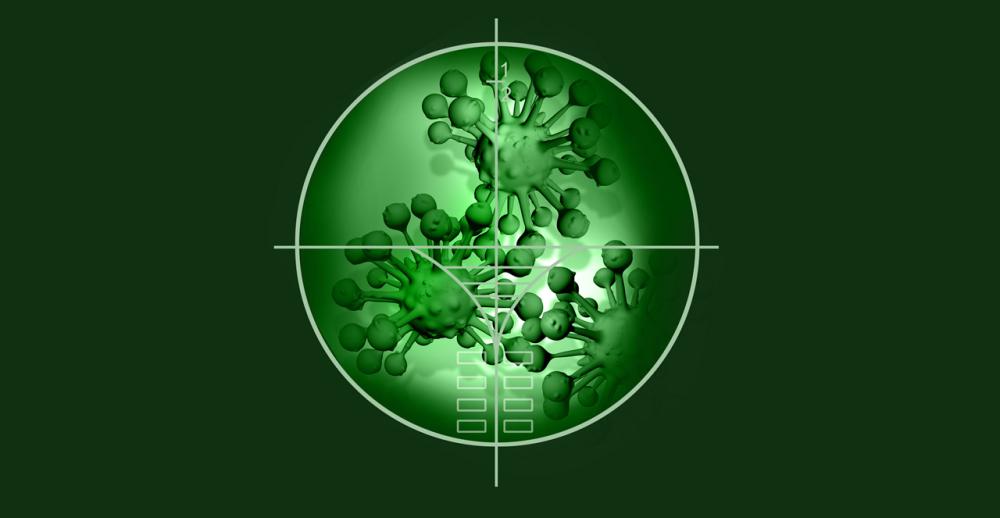Key Players take on the fight against COVID-19/SARS-CoV-2 (Coronavirus)
May 2, 2022

The worldwide Pandemic known as COVID-19/SARS-CoV-2 (Coronavirus) has consumed the media, our government, and has changed our day-to-day lives. Researchers at the University of Minnesota are working around the clock to respond to this crisis. The Department of Veterinary and Biomedical Sciences (VBS) with the College of Veterinary Medicine has joined the research mission to learn more and hopefully discover data that leads to a cure for this rapidly spreading and potentially deadly virus.
The operating VBS research teams include:
Drs. Yuying Liang and Hinh Ly: Drs. Liang and Ly received funding from the UMN School of Medicine to work on two separate COVID-19 Rapid Response projects to develop a novel serological assay for the detection of SARS-CoV-2 exposure/transmission in humans and in the animal origin or potential intermediate host(s), and to develop a new vaccine for COVID-19 that is based on their recently patented invention of a novel viral vaccine vector (U.S. Patent Application No. 10,533,159 and International Patent Publication No. PCT/US2015/051337).
Drs. Bruce Walcheck and Jianming (Jimmy) Wu: Drs. Walcheck and Wu joined forces to investigate spike protein expressed by severe acute respiratory syndrome-related coronavirus (SARS-CoV-2). The causative agent of COVID-19, recognizes angiotensin-converting enzyme 2 (ACE2) to initiate infection. ACE2 has been shown to be clipped by a proteolytic process upon cell activation and upon spike protein binding. The latter process can increase viral entry. The protease they study, ADAM metallopeptidase domain 17 protein (ADAM17), is involved in ACE2 clipping. ADAM17 is also responsible for TNFalpha release, a key pro-inflammatory cytokine associated with SARS. The research teams of Drs. Walcheck and Wu will examine whether blocking ADAM17 activity reduces viral entry and/or damaging inflammation during infection. They will work in collaboration with Fang Li (expertise in coronaviruses) to test our hypothesis. The Walcheck lab has recently discovered a human antibody that blocks ADAM17, and thus they are that much closer to a biological drug for the clinic.
Dr. Kathleen Boris-Lawrie: Dr. Boris-Lawrie explains, “The COVID-19 outbreak has crystallized the urgent need for therapeutics to inhibit transmission in human populations. Halting viral protein synthesis is fundamental to limiting transmission and pathogenesis.” Dr. Boris-Lawrie and her lab team aim to produce lead compounds that inhibit the synthesis of SARS-CoV2 viral proteins and attenuate SARS-CoV2 transmission. Their goal is to:
- Employ FDA-approved compounds and optimized small molecules with affinity and specificity for RNA targets.
- Apply cell-based and future biophysical screening tools to identify molecules with specificity to SARS-CoV2 RNA without cellular toxicity. This research will identify small molecule inhibitors of SARS-CoV2 RNA.
- The 5' end of all SARS-CoV2 RNAs is identical and highly conserved. This 65 nucleotide sequence has an integral role in the viral replication cycle. In preliminary studies, the research team has identified RNA-biased small molecules binding the 5' end of HIV RNA at concentrations within the range of compounds in clinical trials. The effect of these compounds on HIV replication was documented. The compounds reduced virion production and diminished sentinel replication intermediates. Here Dr. Boris-Lawrie and her team will employ the validated viral screening assay to identify compounds binding the SARS-CoV2 RNA and deregulating SARS-CoV2 RNA function.
The VBS Department would like to thank these dedicated research teams for their ongoing aid in this important quest to tackle and defeat Coronavirus.


